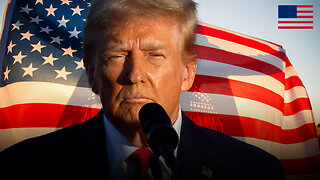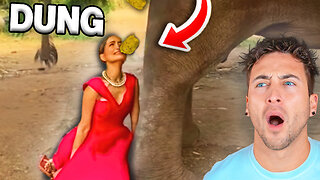Premium Only Content

What's Going on with the Hole in the Ozone Layer We Asked a NASA Expert
The ozone layer is a region of Earth's stratosphere that absorbs most of the Sun's ultraviolet radiation. It contains high concentrations of ozone (O3) relative to other parts of the atmosphere, although still small in relation to other gases in the stratosphere. The ozone layer contains less than 10 parts per million of ozone, while the average ozone concentration in Earth's atmosphere as a whole is about 0.3 parts per million.
The ozone layer is important because it protects life on Earth from ultraviolet radiation. Ultraviolet radiation can cause skin cancer and cataracts in humans, and it can also damage plants and animals.
In the 1970s and 1980s, scientists discovered that human activities were depleting the ozone layer. This depletion was caused by the release of ozone-depleting substances (ODS) into the atmosphere. ODSs include chlorofluorocarbons (CFCs), halons, and methyl bromide.
CFCs were used in a variety of products, including refrigerators, air conditioners, and aerosol sprays. Halons were used in fire extinguishers, and methyl bromide was used as a pesticide.
When ODSs are released into the atmosphere, they break down and release chlorine and bromine atoms. These atoms can then destroy ozone molecules.
In 1987, the international community signed the Montreal Protocol on Substances that Deplete the Ozone Layer. The Montreal Protocol is a binding agreement that phases out the production and use of ODSs.
As a result of the Montreal Protocol, the ozone layer is slowly recovering. However, the ozone hole over Antarctica is still present. The ozone hole is expected to close completely by the middle of the 21st century.
We asked a NASA expert about the latest news on the ozone hole.
NASA Expert: The ozone hole over Antarctica has been shrinking in recent years, and it is expected to close completely by the middle of the 21st century. This is good news, but it is important to continue monitoring the ozone layer and to take steps to protect it.
Here are some things that you can do to help protect the ozone layer:
Avoid using products that contain ozone-depleting substances.
Recycle and dispose of ozone-depleting substances properly.
Support policies that protect the ozone layer.
By taking these steps, we can help to ensure that the ozone layer continues to protect life on Earth.
-
 LIVE
LIVE
The Charlie Kirk Show
1 hour agoTrump the Unbreakable + The Anti-Abstraction Presidency | Marlow, Morris, Hanson, Nuclear | 8.21.25
3,307 watching -
 2:02:51
2:02:51
Steven Crowder
4 hours agoWoke CNN Host's Meltdown Over Trump Slavery Truth Needs to Be Examined
188K173 -
 19:42
19:42
Law&Crime
22 hours agoPraying Florida Teen Pleads Not Guilty After Parents’ Gruesome Murder
953 -

JuicyJohns
4 hours ago $1.23 earned🟢#1 REBIRTH PLAYER 10.2+ KD🟢
86.9K1 -
 1:00:50
1:00:50
VINCE
4 hours agoThe Pro-Crime Left Is Officially Finding Out | Episode 108 - 08/21/25
183K215 -
 44:15
44:15
Nikko Ortiz
3 hours agoLive - News, Politics, Podcast And Naaah Im Playin We Chillen
29.8K2 -
 1:56:55
1:56:55
Dear America
5 hours agoLUNATICS Protest DC Crime Being Down 30%?! + FBI Catches A TOP MOST WANTED!!
97.4K51 -
 2:59:39
2:59:39
Wendy Bell Radio
9 hours agoThe Easy Way Or The Hard Way
65.5K71 -
 2:14:46
2:14:46
Matt Kohrs
15 hours agoBuckle Up! Markets Get Tilted || LIVE! Day Trading Futures & Options
51K4 -
 LIVE
LIVE
LFA TV
6 hours agoLFA TV ALL DAY STREAM - THURSDAY 8/21/25
4,050 watching